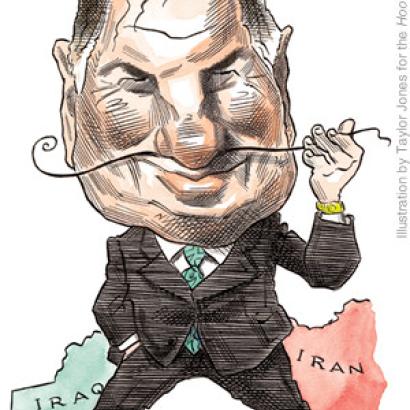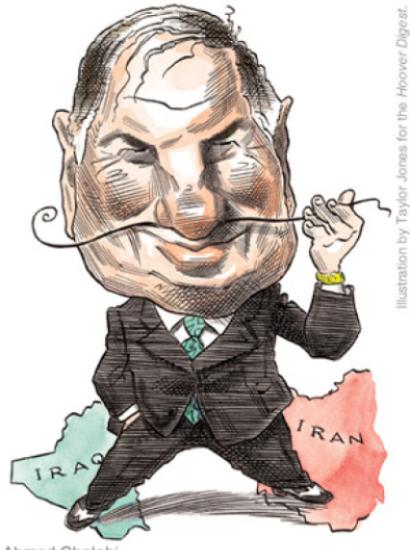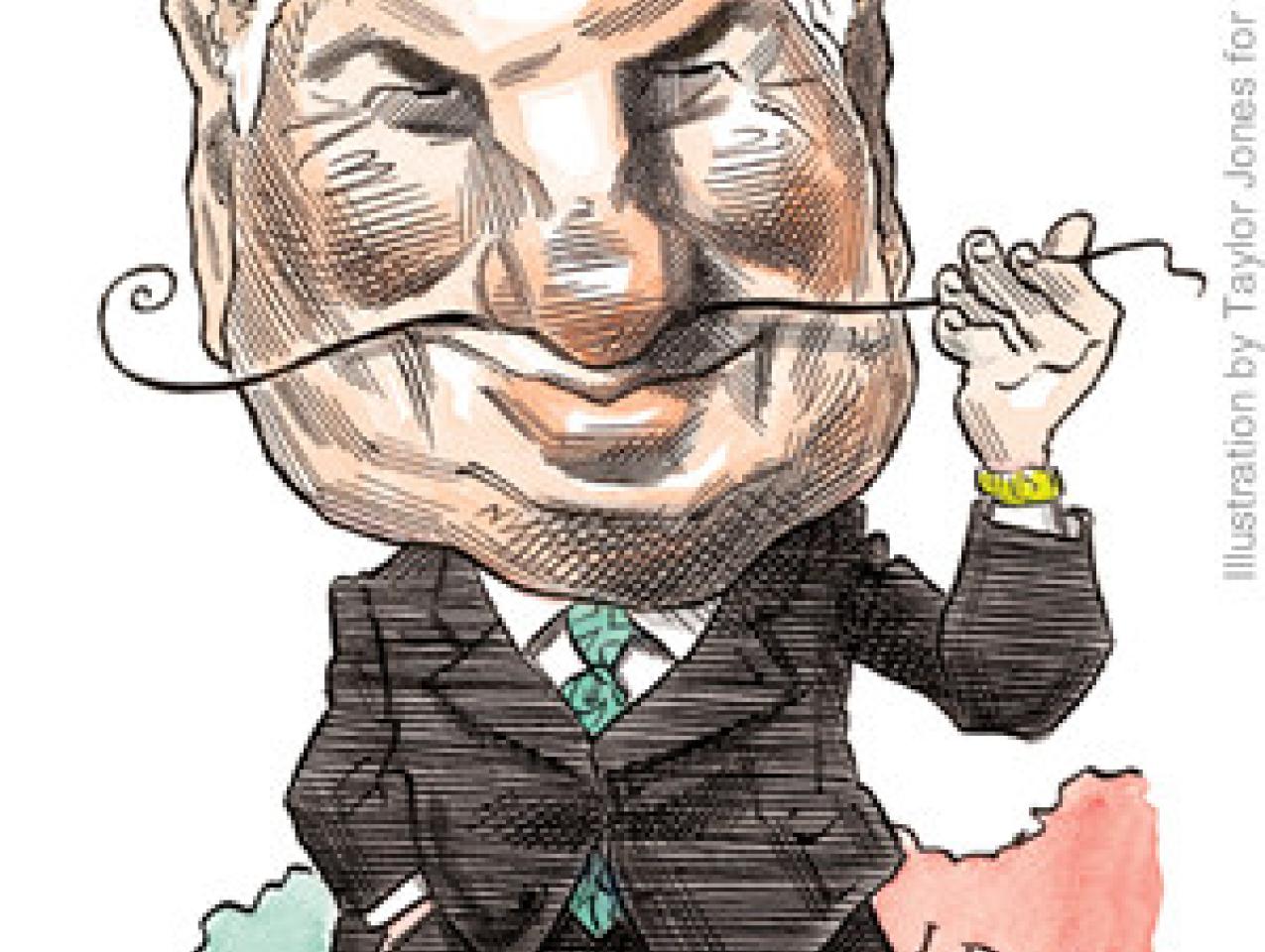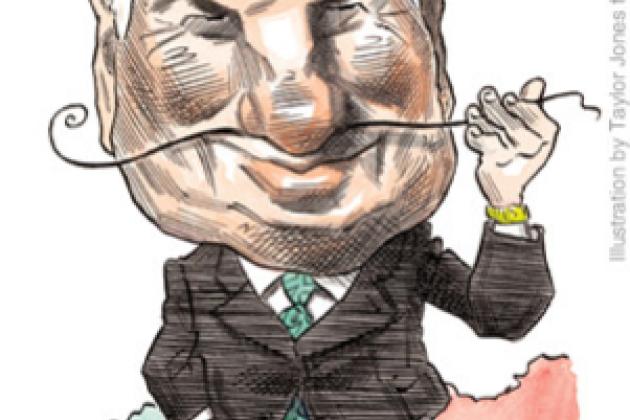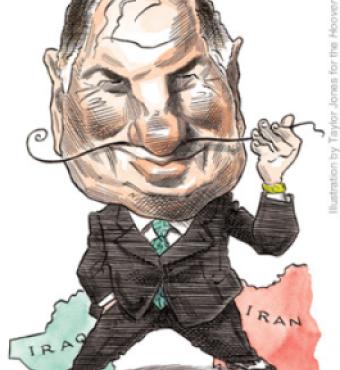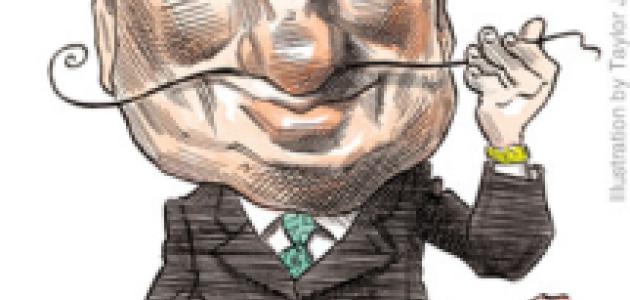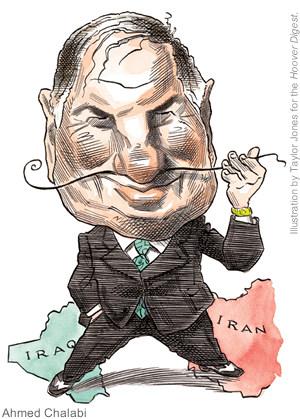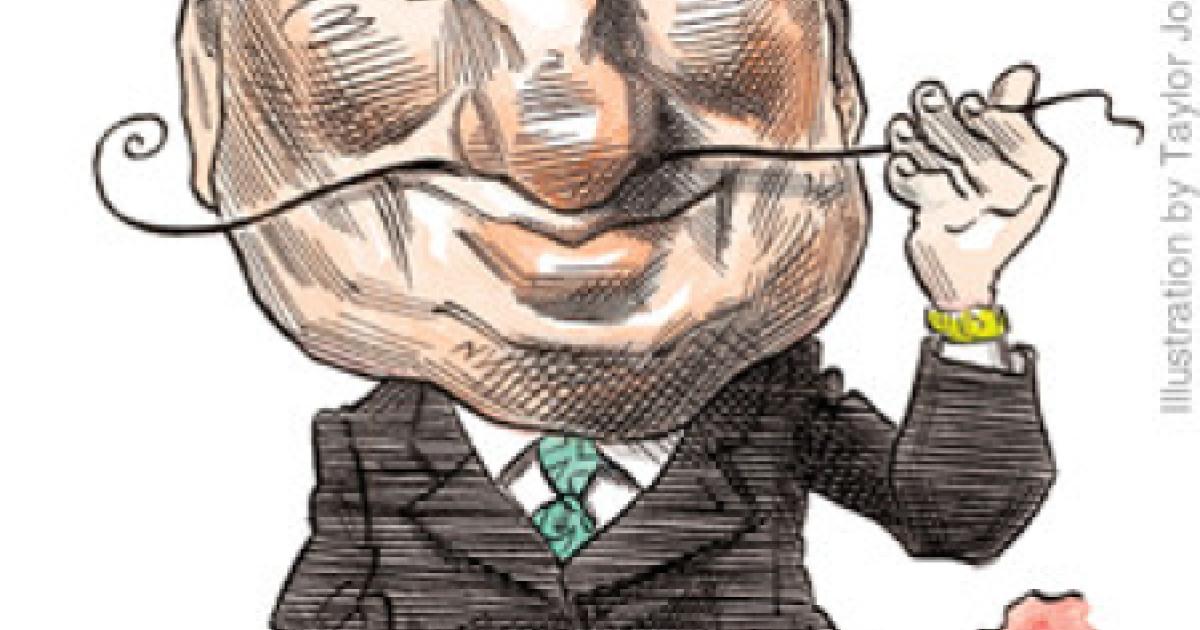- Security & Defense
- US Defense
- International Affairs
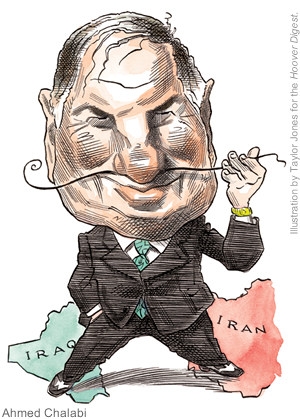
With the transfer of power to a new interim Iraqi government on June 28, the political phase of the U.S. occupation came to an abrupt end. The transfer marked an urgently needed, and in some ways hopeful, new departure for Iraq. But it did not erase, or even much ease at first, the most pressing problems confronting that beleaguered country: endemic violence, a shattered state, a nonfunctioning economy, and a decimated society. Some of these problems may have been inevitable consequences of the war to topple Saddam Hussein. But Iraq today falls far short of what the Bush administration promised. As a result of a long chain of U.S. miscalculations, the coalition occupation has left Iraq in far worse shape than it need have and has diminished the long-term prospects of democracy there. Iraqis, Americans, and other foreigners continue to be killed. What went wrong?
Blundering in Baghdad
Many of the original miscalculations made by the Bush administration are well known. But the early blunders have had diffuse, profound, and lasting consequences—some of which are only now becoming clear. The first and foremost of these errors concerned security: The Bush administration was never willing to commit anything like the forces necessary to ensure order in postwar Iraq. From the beginning, military experts warned Washington that the task would require, as U.S. Army chief of staff Eric Shinseki told Congress in February 2003, “hundreds of thousands” of troops. For the United States to deploy forces in Iraq at the same ratio to population as NATO had in Bosnia would have required half a million troops. Yet the coalition force level never reached even a third of that figure. Secretary of Defense Donald Rumsfeld and his senior civilian deputies rejected every call for a much larger commitment and made it very clear, despite their disingenuous promises to give the military “everything” it asked for, that such requests would not be welcome. No officer missed the lesson of General Shinseki, whom the Pentagon rewarded for his public candor by announcing his replacement a year early, making him a lame-duck leader long before his term expired. Officers and soldiers in Iraq were forced to keep their complaints about insufficient manpower and equipment private, even as top political officials in the Coalition Provisional Authority (CPA) insisted publicly that greater military action was necessary to secure the country.
In truth, around 300,000 troops might have been enough to make Iraq largely secure after the war. But such security would also have required different kinds of troops, with different rules of engagement. The coalition should have deployed vastly more military police and other troops trained for urban patrols, crowd control, civil reconstruction, and peace maintenance and enforcement. Tens of thousands of soldiers with sophisticated monitoring equipment should have been posted along the borders with Syria and Iran to intercept the flows of foreign terrorists, Iranian intelligence agents, money, and weapons.
But Washington failed to take such steps, for the same reasons it decided to occupy Iraq with a relatively light force: hubris and ideology. Contemptuous of the State Department’s regional experts who were seen as too “soft” to remake Iraq, a small group of Pentagon officials ignored the elaborate postwar planning the State Department had overseen through its “Future of Iraq” project, which had anticipated many of the problems that emerged after the invasion. Instead of preparing for the worst, Pentagon planners assumed that Iraqis would joyously welcome U.S. and international troops as liberators. With Saddam’s military and security apparatus destroyed, the thinking went, Washington could capitalize on the ensuing goodwill by handing the country over to Iraqi expatriates such as Ahmed Chalabi, who would quickly create a new democratic state. Not only would fewer U.S. troops be needed at first, but, within a year, the troop levels could drop to a few tens of thousands.
Of course, these naive assumptions quickly collapsed, along with overall security, in the immediate aftermath of the war. U.S. troops stood by helplessly, outnumbered and unprepared, as much of Iraq’s remaining physical, economic, and institutional infrastructure was systematically looted and sabotaged. And even once it became obvious that the looting was not a onetime breakdown of social order but an elaborately organized, armed, and financed resistance to the U.S. occupation, the Bush administration compounded its initial mistakes by stubbornly refusing to send in more troops. Administration officials repeatedly deluded themselves into believing that the defeat of the insurgency was just around the corner—just as soon as the long, hot summer of 2003 ended, or reconstruction dollars started flowing in and jobs were created, or the political transition began, or Saddam Hussein was captured, or the interim government was inaugurated. As in Vietnam, a turning point always seemed imminent, and Washington refused to grasp the depth of popular disaffection.
Under its chief administrator, Ambassador L. Paul Bremer III, the CPA (which ruled Iraq from May 2003 until June 2004) worked hard and creatively to craft a transition to a legitimate, viable, and democratic system of government while rebuilding the overall economy and society. As I saw during my brief tenure as a senior CPA adviser on governance earlier this year, the U.S. administration got a number of things right. But one cannot review the political record without underscoring the pervasive security deficit, which undermined everything else the coalition sought to achieve.
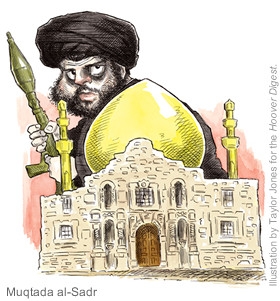
National Insecurity
Any effort to rebuild a shattered, war-torn country should include four basic components: (1) the political reconstruction of a legitimate and capable state; (2) economic reconstruction, including the rebuilding of the country’s physical infrastructure and the creation of rules and institutions that enable a market economy; (3) social reconstruction, including the renewal (or in some cases, creation) of a civil society and political culture that foster voluntary cooperation and the limitation of state power; and (4) the provision of general security to establish a safe and orderly environment.
These four elements interact in intimate ways. Without legitimate, rule-based, and effective government, economic and physical reconstruction will lag and investors will refuse to risk their capital to produce jobs and new wealth. Without demonstrable progress on the economic front, a new government cannot develop or sustain legitimacy, and its effectiveness will quickly wane. Without the development of social capital—in the form of horizontal bonds of trust and cooperation in a (re)emerging civil society—economic development will not proceed with sufficient vigor or variety, and the new system of government will not be properly scrutinized or supported. And without security, everything else grinds to a halt.
In post-conflict situations in which the state has collapsed, security trumps everything: It is the central pedestal that supports all else. Without some minimum level of security, people cannot engage in trade and commerce, organize to rebuild their communities, or participate meaningfully in politics. Without security, a country has nothing but disorder, distrust, and desperation—an utterly Hobbesian situation in which fear pervades and raw force dominates. This is why violence-ridden societies tend to turn to almost any political force that promises to provide order, even if it is oppressive. It is a big reason the CPA was unable to spend most of the $18.6 billion for Iraqi reconstruction appropriated by Congress last fall. And it explains why a country must first have a state before it can become a democracy. The primary requirement of a state is that it hold a monopoly on the use of violence. By that measure, the body that the United States transferred power to in Baghdad on June 28 may have been a government—but it was not a state.
Even though insufficient forces were deployed to Iraq, much more could have been done with them to build security and contain the forces of disorder before the handoff. Unfortunately, the CPA not only lacked the resources for the job, it also lacked the understanding and organization. The effort to create a new Iraqi police force, for example, withered from haste, inefficiency, poor planning, and sheer incompetence. Newly minted Iraqi cops were rushed onto the job with too little training, insufficient vetting, and shamefully inadequate equipment. Although most had uniforms (of a sort), they lacked cars, radios, and body armor and were often outgunned by the criminals, terrorists, and saboteurs they faced. As vital symbols of the new Iraqi state, the police also quickly became “soft targets” for terrorist attacks, and coalition forces did too little too late to protect them.
Iraqi politicians, civic leaders, and government officials, as well as civilian coalition officials and their Iraqi aides, paid a heavy price for the lack of security. More than 100 Iraqi government workers were killed during the occupation, including several high-level officials and the occupant of the Governing Council’s rotating presidency. Iraqis collaborating with the occupation (including those lining up for jobs) became targets—especially translators, a fact that worsened the CPA’s already severe language gap. Although few CPA officials themselves were killed, many were attacked, and numerous civilian contractors were slain or kidnapped.
Insecurity drove the political occupation into a physical and psychological bunker. Already separated from Iraqis by the formidable security around the three-square-mile “Green Zone” (where the CPA was based) and around the CPA’s regional and provincial headquarters, coalition officials began to travel less and less with every passing month.
By the early spring of this year, foreign officials and contractors could no longer safely move around the country without an armored car and a well-armed escort. And even these precautions failed to protect them from well-placed and powerful roadside bombs. The most secure means of transportation, helicopters, were usually unavailable to all but the highest officials—one of many shortages that lasted throughout the occupation and that the Pentagon was very slow and very inefficient in addressing.
Also absent was the determination to face down political threats, as the case of the young Shiite cleric Muqtada al-Sadr and his al-Mahdi militia made painfully clear. The same administration that was bold enough to launch an unpopular war against Saddam blanched at the prospect of confronting a bully such as Sadr—even though he was reviled by the majority of the Shiite population and the religious establishment. There was certainly no shortage of warning signs, provocations, and justifications for removing Sadr. Yet when the coalition finally decided to act, in April 2004, its approach was impromptu and incomprehensibly chaotic.
Not only did the fighting in April and May fail to eliminate Sadr’s forces, it also did nothing to counter Iraq’s other heavily armed militias. These include not only the battle-hardened Kurdish Pesh Merga (which number at least 50,000 fighters) but also the large and well-armed militias of the two most important Shiite religious parties, SCIRI (the Supreme Council for Islamic Revolution in Iraq) and Dawa. At the beginning of 2004, the CPA began negotiating an agreement with these militias for their disarmament, demobilization, and reintegration into the new Iraqi police and armed forces. The CPA’s plan was intelligent and comprehensive in design, but myriad difficulties prevented its implementation before the transfer of power in June.
It now seems unlikely that the weak and besieged new Iraqi government will have the will or capacity to enforce the demobilization plan. In fact, the new Iraqi state is caught in a catch-22: To be viable, it must build up its armed forces as rapidly as possible. But the readiest sources of soldiers and police are the most powerful militias, which will probably allow their fighters to join the new military only if their command structures remain intact. Thus, if the fledgling Iraqi state hopes to truly defeat the militias, it may have to go to war with itself. That seems hard to imagine. Yet if Iraq tries to hold elections while the militias remain intact (in one guise or another), the campaign is likely to become a very bloody and undemocratic affair. Candidates will face assassination, weaker political opponents will be run out of town, and the electoral machinery will be hijacked by those with the most guns.
Even if the security situation improves enough to allow elections to go forward on time, Iraq could still get into further trouble if it follows the recommendations of the United Nations and uses a national-list system, apportioning seats in parliament on the basis of nationwide voting, because this would give the big regional and religious parties an added incentive to inflate their numbers through force and fraud. Should that occur, the biggest winners will be the best-armed and most-organized forces—the Kurds in the far north and the Iranian-backed Islamist parties in the Shiite south. The American occupation could wind up paving the way for the “election” of an Iranian-linked Islamist government in Baghdad.
Closing the Legitimacy Gap
As the last year in Iraq has made clear, decent governance is not possible without some minimal level of security. But security could not have been improved without significant progress on the political front. This was true in several respects. First, although some of the terrorist violence (particularly the suicide car bombings) was organized by outside forces, as the Bush administration claimed, much of it (including roadside bombings, killing contractors, and other forms of sabotage) was committed by Iraqis, mainly Sunnis who turned against the occupation because they believed it excluded them politically. Second, young Shiite men rose up in arms when their lack of access to jobs and other opportunities rendered them vulnerable to the appeals of militants such as Sadr. Third, political tensions raised the worrisome prospect of violence between Iraq’s Kurds and Arabs, both on the volatile boundaries of the Kurdistan region (especially Kirkuk, where militant Kurds wanted to expel Arabs who had settled there during Saddam’s campaign of “Arabization”) and in the larger struggle over the future shape of the country. And fourth, the challenge of demobilizing the militias while building up the new Iraqi armed forces was largely a political problem. In all these cases, containing the violence required not only a strong and adept military response but also a sustained political effort to construct a broad-based, inclusive system with which all major Iraqi groups could identify.
The United States, however, lacked an effective political strategy for post-war Iraq, as became clear almost immediately after the invasion, when former general Jay Garner’s ill-fated Office of Reconstruction and Humanitarian Assistance took charge in Baghdad. Part of the problem was that neither Garner nor Bremer comprehended how Iraqis perceived them. Throughout the occupation, the coalition lacked the linguistic and area expertise necessary to understand Iraqi politics and society, and the few longtime experts present were excluded from the inner circle of decision making in the CPA. Thus the coalition never grasped, for example, the fact that, although most Iraqis were grateful for having been liberated from a brutal tyranny, their gratitude was mixed with deep suspicion of the United States’ real motives (not to mention those of the United Kingdom, a former colonial ruler of Iraq); with humiliation that the Iraqis themselves had proved unable to overthrow Saddam; and with unrealistic expectations of the postwar administration, which Iraqis expected to quickly deliver them from their problems. Too many Iraqis viewed the invasion not as an international effort but as an occupation by Western, Christian, essentially Anglo-American powers, which evoked powerful memories of previous subjugation and of the nationalist struggles against Iraq’s former overlords.
The CPA also failed to grasp that Saddam retained a base of popular support in Iraq even after his overthrow. Although he had brutalized plenty of Sunnis, much of the Sunni Arab population either supported him or opposed his ouster, fearing that regime change would cost them—20 percent of the population—their historic monopoly over the state and its precious resources.
The occupation compounded its original errors of analysis with two strategic miscalculations. First, it launched a de-Baathification campaign that was much too broad, excluding from any meaningful role in the future state anyone who had held any kind of high-level position in the party, regardless of whether they were directly involved in serious crimes.
The second mistake was made in May 2003, when, as one of his first official acts, Bremer ordered the dissolution of the Iraqi army. By formally dissolving the army, the CPA lost the opportunity to reconstitute some portions of it to help restore order and left tens of thousands of armed soldiers and officers cut out of the new order and thus prime candidates for recruitment by the insurgency.
The United States also faced a more diffuse political problem in Iraq. Deep local suspicions of U.S. motives combined with the memory of Western colonialism and resentment of the U.S. stance in the Israeli-Palestinian struggle to generate a massive lack of legitimacy for the occupation authority. Washington failed to do the two things that might have helped to fill this gap: increase international participation in the political administration of the country (although this would have been difficult given international opposition to the war), and put legitimate Iraqi leaders in visible, meaningful governance roles as soon as possible.
Can Iraq Become a Democracy?
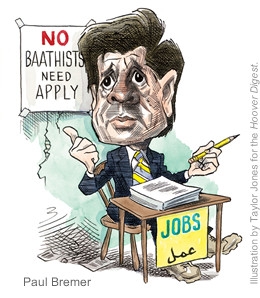
Although the U.S. occupation and the CPA’s effort to design and foster democracy in Iraq were deeply flawed, other, more positive aspects of the story offer real hope for the future. Through various offices and mechanisms, including the U.S. Agency for International Development and the National Endowment for Democracy, the CPA presided over an ambitious effort to promote pluralist democracy in Iraq. Some financial assistance and technical support were delivered very quickly and sensitively to emerging Iraqi civil society organizations, such as women’s groups, youth organizations, professional associations, and think tanks working to expand and stimulate democratic participation.
Like many CPA officials, I found that most Iraqis have a deep ambition to live in a decent, democratic, and free society and that they are prepared to do the hard work that building a democracy requires. Above all else, Iraqis want security: They want to be free from the terror that disfigured their lives under Saddam and that has continued, in a different form, since the war. But most favor achieving this security through democratic means, not under some “benevolent” strongman.
Because of the failures and shortcomings of the occupation—as well as the intrinsic difficulties that any occupation following Saddam’s tyranny was bound to confront—it is going to take a number of years to rebuild the Iraqi state and to construct any kind of viable democratic and constitutional order in Iraq. The post-handover transition is going to be long and initially very bloody. It is not clear that the country is going to be able to conduct reasonably credible elections by next January. And even if those elections are held in a minimally acceptable fashion, it is hard to imagine that the over-ambitious transition timetable for the remainder of 2005 will be kept. Nevertheless, the end of occupation and the transfer of authority to an interim government on June 28 offered at least a chance for a new beginning. And there is no alternative to this transitional program that does not involve one awful scenario or another: civil war, massive renewed repression, the establishment of a safe haven for terrorist organizations—or quite possibly all three.
The transition in Iraq is going to need a huge amount of international assistance—political, economic, and military—for years to come. Hopefully, the U.S. performance will improve now that Iraqis are in charge of their own future. It is going to be costly and it will continue to be frustrating. Yet a large number of courageous Iraqi democrats, many with comfortable alternatives abroad, are betting their lives and their fortunes on the belief that a new and more democratic political order can be developed and sustained in Iraq. The United States owes it to them—and to itself—to continue to help them.








